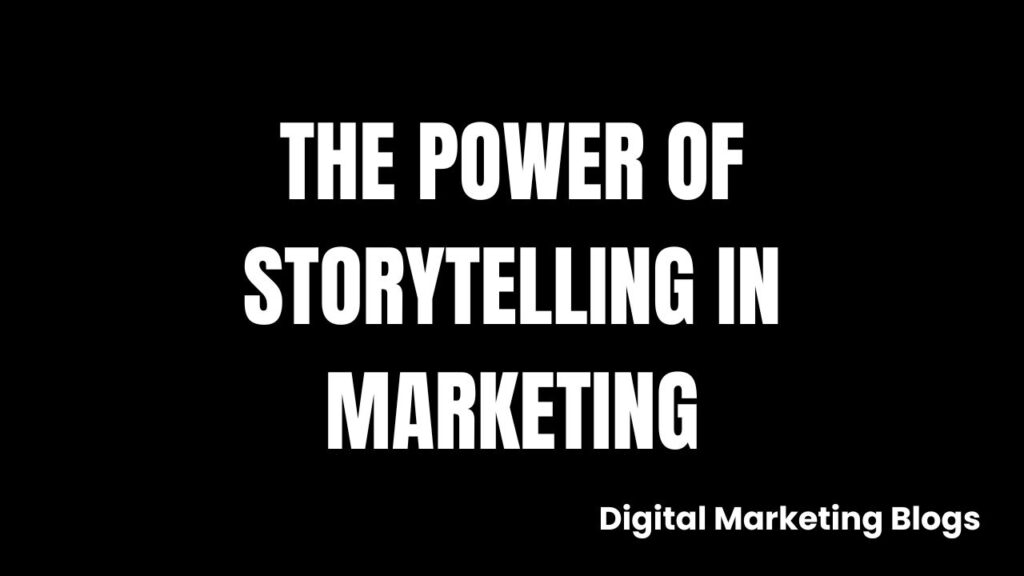In today’s digital world, businesses are constantly competing for attention. Traditional marketing methods are no longer enough to engage customers. This is where storytelling in marketing becomes a game-changer.
A well-crafted story can connect with your audience emotionally, build trust, and make your brand memorable. Whether you are a digital marketer in Calicut or a business owner, storytelling can help you create a strong brand identity and drive sales.
1. Why Storytelling Matters in Marketing
Storytelling is not just about telling a story—it’s about creating an emotional connection with your audience. People remember stories better than facts or statistics.
Benefits of Storytelling in Marketing:
- Builds Emotional Connection: Stories evoke emotions, making your brand more relatable.
- Increases Engagement: A compelling story keeps your audience interested.
- Enhances Brand Recall: People remember stories more than plain advertisements.
- Boosts Conversions: Emotional storytelling influences buying decisions.
A strong story can turn a simple brand into a memorable experience.
2. Elements of a Powerful Brand Story
A great marketing story has key elements that make it engaging and effective.
Essential Components of a Brand Story:
- Character: Your audience should relate to the main character (customer, brand, or founder).
- Conflict: Show a problem or challenge that needs to be solved.
- Resolution: Explain how your product or service solves the problem.
- Emotion: Make the audience feel something—joy, hope, excitement, or trust.
A well-structured story keeps your audience engaged and makes your brand more impactful.
3. How to Use Storytelling in Marketing
A. Brand Storytelling
Your brand story should reflect your values, mission, and journey.
Example:
A small business in Calicut started with a dream to provide eco-friendly products. Over time, they faced challenges but stayed committed to sustainability. Today, they are a successful brand inspiring others to go green.
B. Customer Stories & Testimonials
Sharing real customer experiences builds trust and credibility.
Example:
A customer struggled with digital marketing until they found the best digital marketing trainer in Calicut. After training, they successfully grew their business online.
C. Social Media Storytelling
Use Instagram, Facebook, and LinkedIn to share engaging stories.
Tips:
- Post behind-the-scenes content.
- Share success stories of customers.
- Use short videos and reels for storytelling.
D. Video Storytelling
Videos are one of the most powerful storytelling tools.
Example:
A brand video showing how a product changed someone’s life can be more impactful than a traditional ad.
E. Email Marketing with Storytelling
Instead of sending plain promotional emails, use storytelling to engage subscribers.
Example:
Start with a relatable problem, introduce your product as the solution, and end with a call to action.
4. Successful Brands Using Storytelling
A. Nike – Inspiring Stories
Nike’s marketing focuses on real-life stories of athletes overcoming challenges. Their slogan, “Just Do It,” is more than words—it’s a movement.
B. Apple – Emotional Connection
Apple’s storytelling highlights innovation, creativity, and simplicity, making customers feel part of a unique experience.
C. Coca-Cola – Happiness & Togetherness
Coca-Cola’s ads often tell stories about friendship, happiness, and celebrations, making their brand emotionally appealing.
These brands prove that storytelling can make a brand unforgettable.
5. How to Create Your Own Brand Story
Step 1: Define Your Brand’s Purpose
Ask yourself:
- Why did you start your business?
- What problem are you solving?
- What values do you stand for?
Step 2: Identify Your Audience
Understand your target audience’s needs, emotions, and challenges.
Step 3: Craft a Compelling Narrative
Use the Character-Conflict-Resolution framework to create an engaging story.
Step 4: Choose the Right Medium
Decide whether to share your story through blogs, videos, social media, or email campaigns.
Step 5: Keep It Authentic
Authenticity builds trust. Be real and relatable in your storytelling.
6. Common Mistakes to Avoid in Storytelling
A. Being Too Sales-Focused
Don’t make your story just about selling—focus on emotions and value.
B. Ignoring the Audience’s Perspective
Your story should resonate with your audience’s experiences and challenges.
C. Overcomplicating the Story
Keep it simple and clear. A confusing story loses impact.
D. Lack of Consistency
Ensure your storytelling aligns with your brand’s values across all platforms.
Avoiding these mistakes will make your storytelling more effective.
7. Future of Storytelling in Marketing
With AI and digital advancements, storytelling is evolving.
Trends to Watch:
- Interactive Storytelling: Engaging users through quizzes, polls, and interactive videos.
- Augmented Reality (AR) Stories: Brands using AR to create immersive experiences.
- User-Generated Content: Customers sharing their own brand experiences.
Storytelling will continue to shape the future of marketing.
Conclusion
Storytelling is a powerful tool that can transform your marketing strategy. It helps build emotional connections, increase engagement, and make your brand memorable.
If you are a digital marketer in kozhikode, mastering storytelling can set you apart from competitors. And if you want to improve your skills, learning from the best digital marketing trainer in Kerala can help you craft compelling brand stories.



